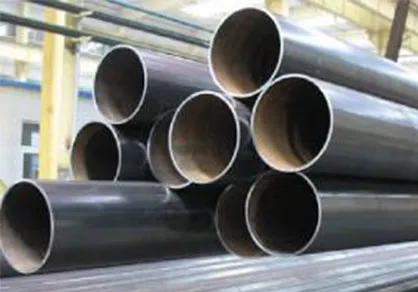-
Cangzhou Yulong Steel Co., Ltd.
-
Phone:
+86 13303177267 -
Email:
admin@ylsteelfittings.com
- English
- Arabic
- Italian
- Spanish
- Portuguese
- German
- kazakh
- Persian
- Greek
- French
- Russian
- Polish
- Thai
- Indonesian
- Vietnamese
- Zulu
- Korean
- Uzbek
- Hindi
- Serbian
- Malay
- Ukrainian
- Gujarati
- Haitian Creole
- hausa
- hawaiian
- Hebrew
- Miao
- Hungarian
- Icelandic
- igbo
- irish
- Japanese
- Javanese
- Kannada
- Khmer
- Rwandese
- Afrikaans
- Albanian
- Amharic
- Armenian
- Azerbaijani
- Basque
- Belarusian
- Bengali
- Bosnian
- Bulgarian
- Catalan
- Cebuano
- China
- China (Taiwan)
- Corsican
- Croatian
- Czech
- Danish
- Esperanto
- Estonian
- Finnish
- Frisian
- Galician
- Georgian
- Kurdish
- Kyrgyz
- Lao
- Latin
- Latvian
- Lithuanian
- Luxembourgish
- Macedonian
- Malgashi
- Malayalam
- Maltese
- Maori
- Marathi
- Mongolian
- Myanmar
- Nepali
- Norwegian
- Norwegian
- Occitan
- Pashto
- Dutch
- Punjabi
- Romanian
- Samoan
- Scottish Gaelic
- Sesotho
- Shona
- Sindhi
- Sinhala
- Slovak
- Slovenian
- Somali
- Sundanese
- Swahili
- Swedish
- Tagalog
- Tajik
- Tamil
- Tatar
- Telugu
- Turkish
- Turkmen
- Urdu
- Uighur
- Welsh
- Bantu
- Yiddish
- Yoruba

Dec . 05, 2024 12:27 Back to list
Understanding the Process and Benefits of Tube Butt Welding Techniques and Applications
Understanding Tube Butt Welds A Comprehensive Overview
When it comes to joining metal tubes in various applications, one of the most effective methods is the tube butt weld. This technique is extensively used in industries ranging from construction to manufacturing, as it provides a strong, reliable, and permanent connection between tube sections. In this article, we will explore the fundamentals of tube butt welding, its advantages, applications, and the factors to consider for achieving optimal results.
What is Tube Butt Welding?
Tube butt welding is a process that involves aligning the ends of two tubes and melting them together using heat, typically produced by an electric arc. The method can be performed using various welding techniques, such as TIG (Tungsten Inert Gas) welding, MIG (Metal Inert Gas) welding, or even laser welding, depending on the materials and specific requirements of the project. The aim is to create a continuous, solid joint that maintains the integrity of the tube's structural and fluid-carrying capabilities.
Advantages of Tube Butt Welding
One of the primary advantages of tube butt welding is the strength of the joint it creates. When properly executed, the welded joint can be as strong, if not stronger, than the original material, making it suitable for high-pressure applications. Additionally, the seamless nature of butt welding minimizes the risk of leaks and potential failure points, which is especially critical in industries such as oil and gas, where safety is paramount.
Another significant benefit is the versatility of the process. Tube butt welding can be applied to a wide range of materials, including carbon steel, stainless steel, and various alloys. This makes it a preferred choice for manufacturers who work with diverse materials and need a consistent jointing method.
Moreover, tube butt welding is efficient
. The process allows for quick assembly of components, which can significantly reduce labor costs and production time. Automation of the welding process can further enhance efficiency, improving consistency and reducing human error.tube butt weld

Applications of Tube Butt Welding
The applications of tube butt welding are vast and varied. In the construction industry, it is commonly used for fabricating structural steel frameworks, handrails, and support beams. In the automotive sector, tube butt welding is employed to create exhaust systems, frame components, and fuel lines. The aerospace industry also utilizes this method for assembling fuel tanks, landing gear, and other critical components where reliability is essential.
Furthermore, tube butt welding plays a crucial role in the oil and gas sector, particularly in constructing pipelines and refinery systems. Its ability to provide a robust seal against high-pressure fluids makes it indispensable for maintaining the integrity of these systems.
Factors to Consider for Successful Tube Butt Welding
While tube butt welding offers many advantages, several factors must be considered to achieve optimal results. First, proper alignment of the tube ends is critical. Misalignment can lead to weak joints or even weld failure. Second, the choice of welding technique should align with the material and application requirements, as some methods may offer better results for specific materials.
Additionally, pre-welding preparation is essential. Cleaning the tube surfaces to remove any contaminants, such as oil, dirt, or rust, can significantly improve the quality of the weld. Lastly, post-weld inspection and testing, such as X-ray or ultrasonic testing, are vital to ensure the integrity of the weld and to identify any potential defects.
Conclusion
In conclusion, tube butt welding is a crucial technique for joining metal tubes across various industries. With its strength, versatility, and efficiency, it remains a preferred method for creating durable joints. By understanding the principles behind tube butt welding and paying attention to the necessary factors for success, industries can enhance their manufacturing processes and product reliability, ensuring safety and performance in their applications.
Latest news
-
ANSI 150P SS304 SO FLANGE
NewsFeb.14,2025
-
ASTM A333GR6 STEEL PIPE
NewsJan.20,2025
-
ANSI B16.5 WELDING NECK FLANGE
NewsJan.15,2026
-
ANSI B16.5 SLIP-ON FLANGE
NewsApr.19,2024
-
SABS 1123 FLANGE
NewsJan.15,2025
-
DIN86044 PLATE FLANGE
NewsApr.19,2024
-
DIN2527 BLIND FLANGE
NewsApr.12,2024
-
JIS B2311 Butt-Welding Fittings LR/SR 45°/90° /180°Seamless/Weld
NewsApr.23,2024











